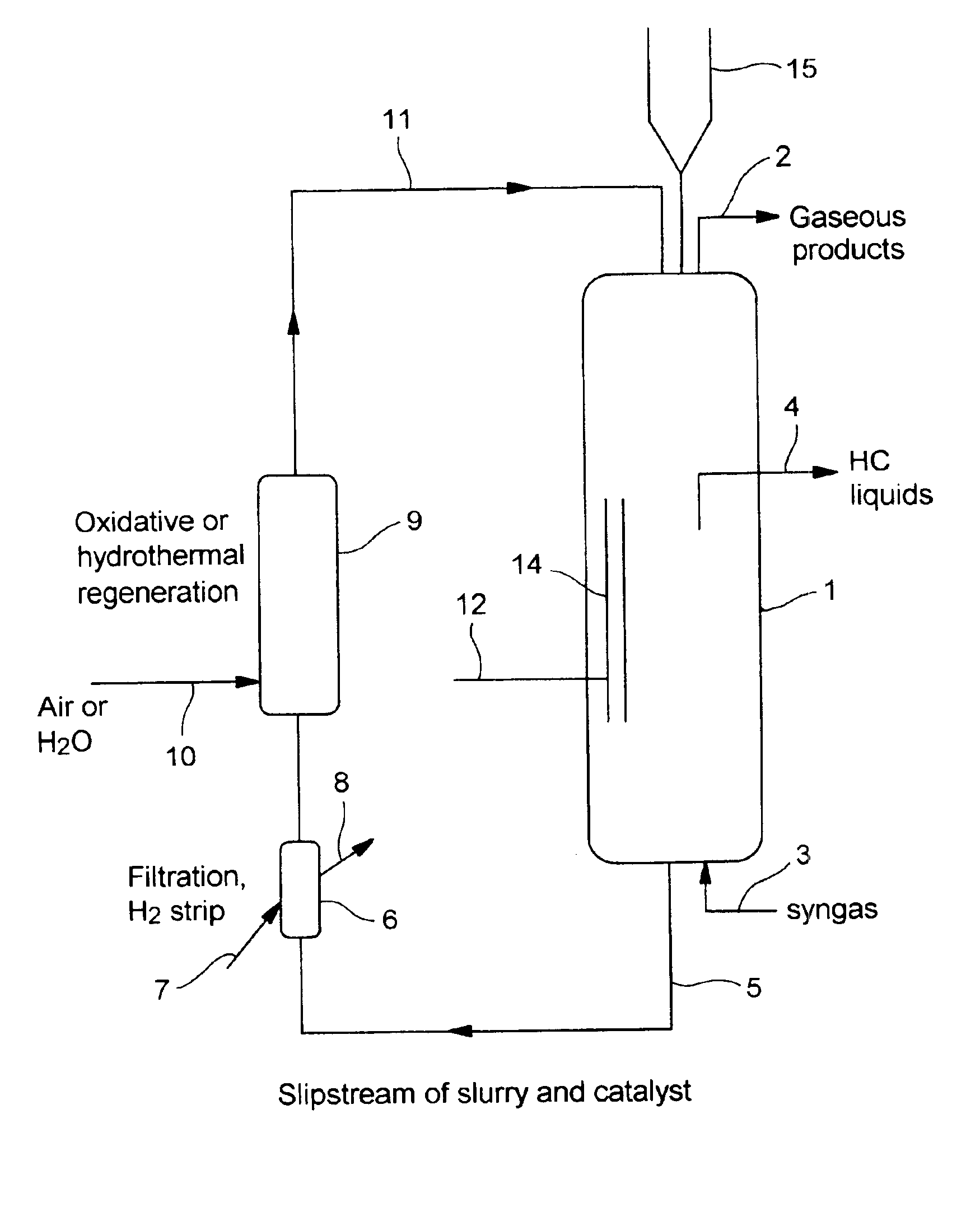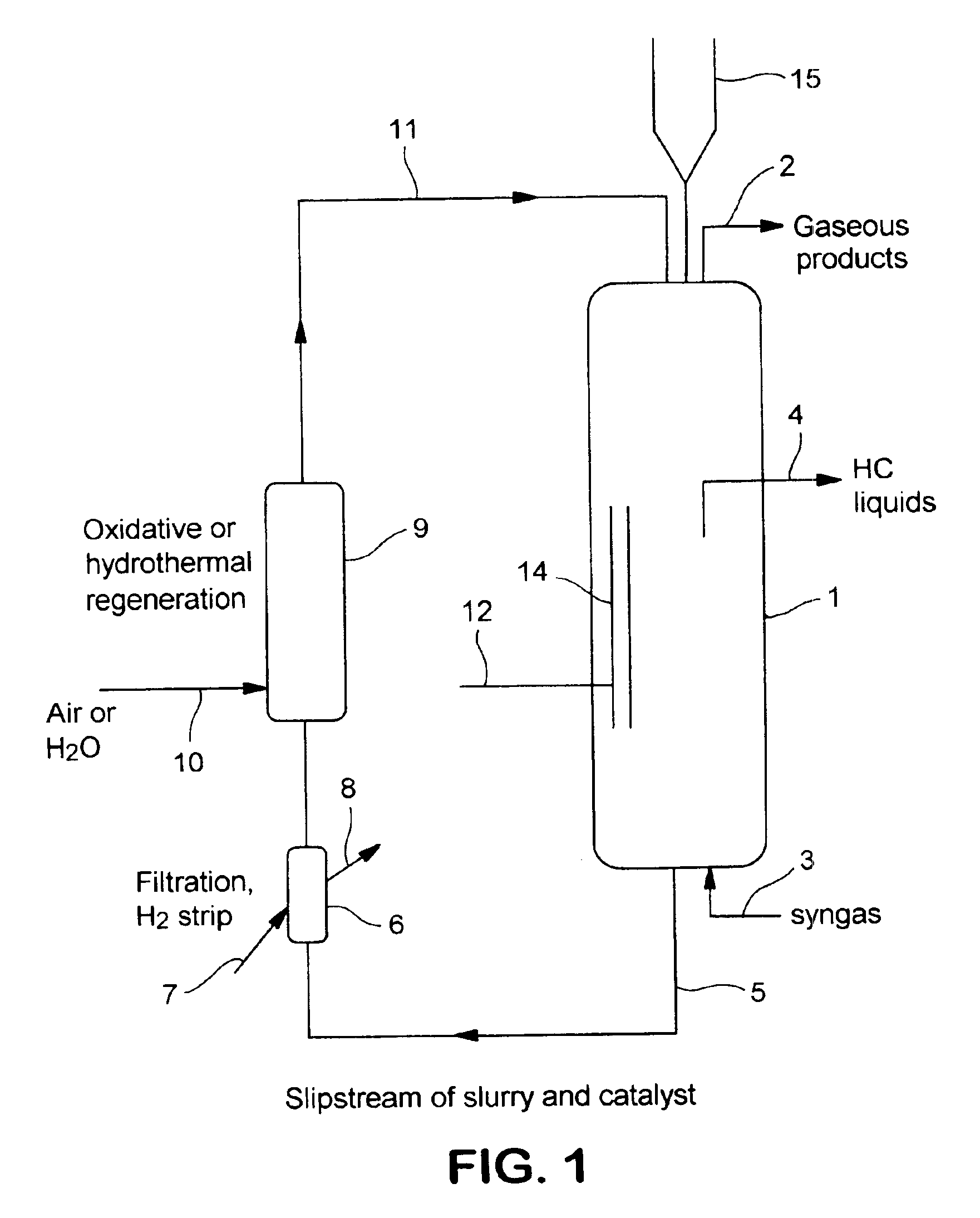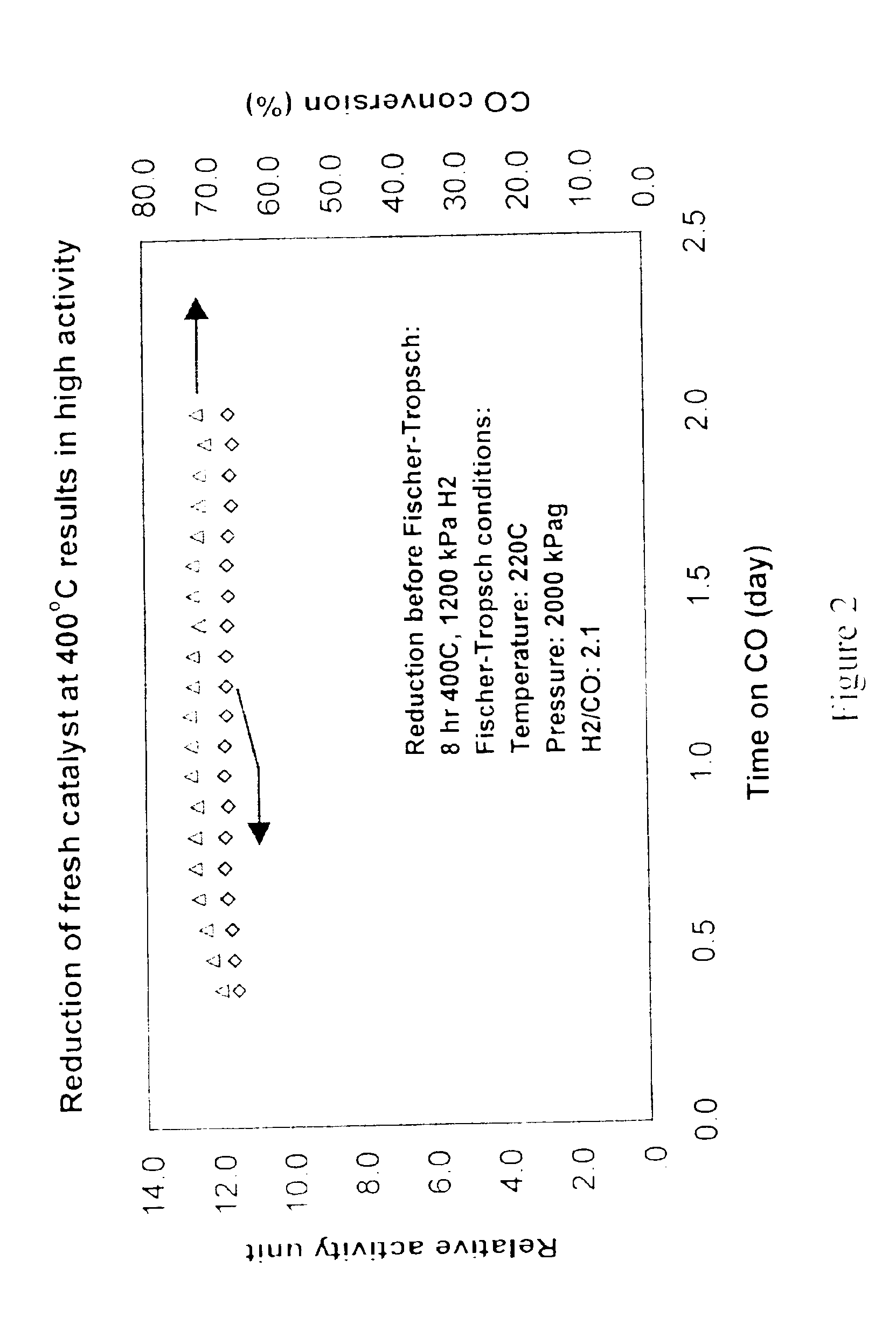In situ catalyst regeneration/activation process
a catalyst and in situ technology, applied in the field of in situ catalyst regeneration/activation process, can solve the problems of high pyrophoric content of catalysts, and the inability to correct long-term catalyst deactivation
- Summary
- Abstract
- Description
- Claims
- Application Information
AI Technical Summary
Benefits of technology
Problems solved by technology
Method used
Image
Examples
example 1
[0038]“Fresh” Co—Re catalyst on a TiO2 support was activated and placed in a Fischer-Tropsch reactor. Two samples were removed: an early-run sample, which was removed a few days after the reactor was in operation, and a late-run sample which was removed very late in the run cycle. Each sample was removed to a dry box and the wax extracted with hot toluene under inert conditions.
[0039]Each sample was divided into two portions. The first portion of each sample was directly transferred under inert condition into a chemisorption unit and the H2 chemisorptions, a standard measure of catalytic activity, were measured by a dual isotherm technique. This technique is described by C. H. Bartholomew in “H2 Adsorption on Supported Noble Metals and its Use in Determining Metal Dispersion”, Catalysis, Vol. 11, pp. 93-126 (1994) CODEN: CATADK ISSN: 0140-0568, CAN 123:66509 AN 1995:536025 CAPLUS. The second portion of each sample was regenerated in a high temperature (350° C.) oxidative (air) envir...
example 2
[0043]A “fresh” (non-activated) catalyst was reduced (activated) in a hydrogen atmosphere at high temperature conditions (1200 kPa, 400° C. for 8 hours). The catalyst was then placed in a Fischer-Tropsch synthesis reactor operated at 200° C., 20.25 bar with a 2.1 H2 / CO ratio. The activity of the catalyst was determined by measuring the catalyst productivity (moles of CO converted / volume of catalyst), adjusted for differences in reaction conditions using a kinetic model similar to those found in W. D. Deckwer, “Kinetic Studies of Fischer-Tropsch Synthesis on Suspended Fe / K Catalyst—Rate Inhibition by CO2 and H2O.”, Ind. Eng. Chem. Process Dev., Vol 25, pp. 643-649 (1986). Relative activity levels for this catalyst are reported in FIG. 2. The activity level for this “fresh”, high-temperature reduced catalyst averaged slightly less than 12.0 as expected.
example 3
[0044]The same experiment as in Example 2 was conducted except that the initial hydrogen reduction of the “fresh” catalyst was conducted at low-temperature rejuvenation conditions (220° C., 2000 kPa for 12 hours). As in example two, the catalyst was placed in a Fischer-Tropsch reactor (at the same operating conditions) and the relative activity was measured. The relative activities for this catalyst are reported in FIG. 3. The relative activity for this catalyst ranged between 5.0 and 5.5. These results clearly demonstrate that a low-temperature reduction of a “fresh” catalyst did not activate the catalyst to acceptable HCS activity levels.
PUM
| Property | Measurement | Unit |
|---|---|---|
| temperature | aaaaa | aaaaa |
| mole ratio | aaaaa | aaaaa |
| pressure | aaaaa | aaaaa |
Abstract
Description
Claims
Application Information
 Login to View More
Login to View More - R&D
- Intellectual Property
- Life Sciences
- Materials
- Tech Scout
- Unparalleled Data Quality
- Higher Quality Content
- 60% Fewer Hallucinations
Browse by: Latest US Patents, China's latest patents, Technical Efficacy Thesaurus, Application Domain, Technology Topic, Popular Technical Reports.
© 2025 PatSnap. All rights reserved.Legal|Privacy policy|Modern Slavery Act Transparency Statement|Sitemap|About US| Contact US: help@patsnap.com



